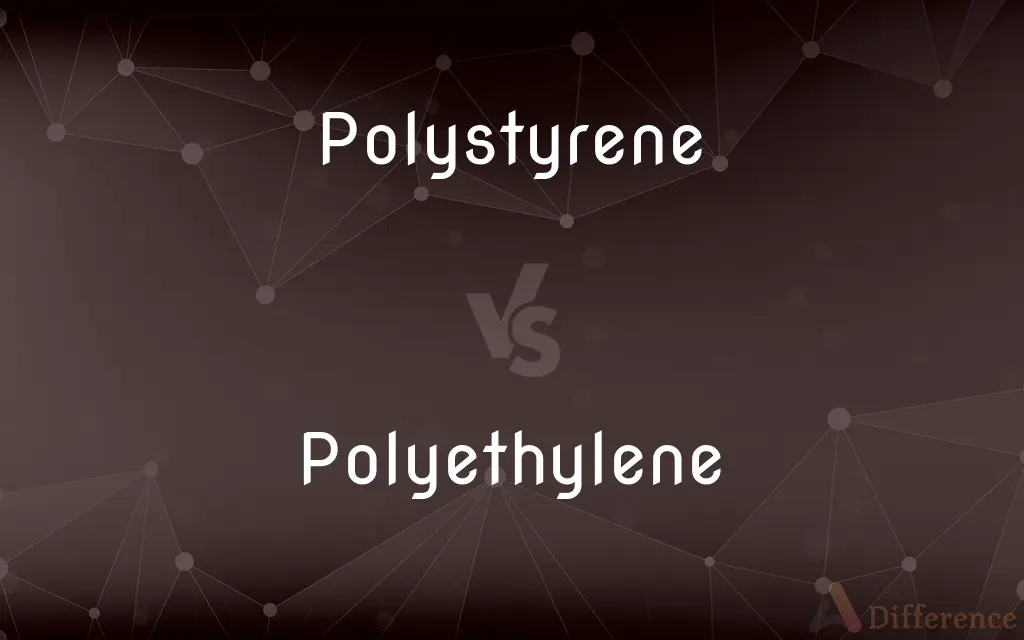Polystyrene vs. Polyethylene — What's the Difference?

Difference Between Polystyrene and Polyethylene
ADVERTISEMENT
Compare with Definitions
Polystyrene
Polystyrene (PS) is a synthetic aromatic hydrocarbon polymer made from the monomer known as styrene. Polystyrene can be solid or foamed.
Polyethylene
Polyethylene or polythene (abbreviated PE; IUPAC name polyethene or poly(methylene)) is the most common plastic in use today. It is a polymer, primarily used for packaging (plastic bags, plastic films, geomembranes and containers including bottles, etc.).
Polystyrene
A rigid clear thermoplastic polymer of styrene that can be molded into objects or made into a foam that is used as thermal insulation.
Polyethylene
A polymerized thermoplastic ethylene resin, used especially for containers, kitchenware, and tubing, or in the form of films and sheets for packaging.
Polystyrene
(organic chemistry) A vinylic polymer of styrene, CH2CHphenyl.
ADVERTISEMENT
Polyethylene
(organic compound) A polymer consisting of many ethylene monomers bonded together; used for kitchenware, containers etc.
Polystyrene
(organic chemistry) An alkane chain of benzene molecules, RCH2CHphenylR.
Polyethylene
A lightweight thermoplastic; used especially in packaging and insulation
Polystyrene
A polymer of styrene; a rigid transparent thermoplastic;
Expanded polystyrene looks like a rigid white foam and is used as packing or insulation
Share Your Discovery

Previous Comparison
Branch vs. Limb
Next Comparison
Colloquium vs. Seminar













































